The events of Pope John Paul II’s death and the beginning of Benedict XVI’s papacy are awesome reminders of the Catholic Church’s religious, social and political power. And there is no more appropriate word than awesome when describing the effect of Church architecture, traditional forms of religious art, the rituals, and the focus of doctrine.

The Church and State’s control over the populace is explored in José Antonio Maravall’s Culture of the Baroque — Analysis of a Historical Structure (University of Minnesota Press, 1986). In it, he describes the baroque method of instilling ‘terror’ and awe in the viewer through the exaggeration of detail, pattern and scale in architectural spaces, paintings and theatrical effects.
Expressionist art, art of the extreme: E.W. Hesse spoke about the “baroque aesthetic of exaggeration and surprise, invented to evoke wonder in the public.” Ultimately, it is a culture of exaggeration and, as such, a violent culture, not because it proposed violence and was dedicated to demonstrating it (although there was also much of this) but because the presentation of the world offered to us by the baroque artist strives to make us feel amazed, moved, by the instances of violent tension that occur and that it holds: landscapes darkened by stormy violence; human figures in “fierce postures”; ruins that tell us of the uncontainable destructive force of time upon the solid work of the human being; and violence grasped in its suffering and tenderness, which grants a greater vibrancy to the baroque creation. All of this can, in part, be mannerism — there is no doubt that the baroque movement inherited many things from mannerist attempts; but now, although gesticulation remains very important, the dramatic element of expression takes precedence, to the extent that expression openly articulates instances of extreme tension in the human experience of things and of other human beings.
This is exactly the effect on me when I first entered St. Peter’s Basillica in Rome. I was both dumbstruck at the immensity of the Church, my Church, and conflicted by the immense display of wealth and naked power — not my Church.
My experience as a young Catholic in the 1970’s was a world apart from Rome. As an exchange student, going to Mass in Italy was an exercise in fear. Italians prayed with what I interpreted as an anxious trepidation; while back home, we were all sunshine and smiles. We attended with ease and humor, sometimes in shorts and sandals, and weren’t shocked to see the occasional guitar or hear the occasional joke. Italy had Michelangelo and Bernini, we had Lorraine Schneider and Lorraine Schneider knockoffs.
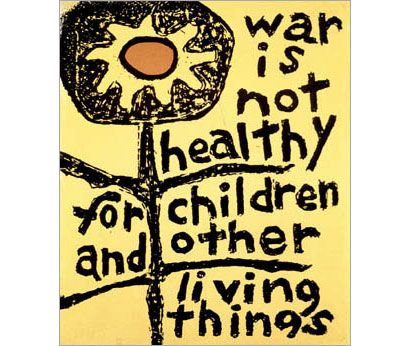
As I recently joined Catholics around the world digging through Joseph Cardinal Ratzinger’s published works (written as prefect of the Congregation for Doctrine of the Faith, nee the Inquisition), I came across an interesting chapter on Art.
Contemporary culture turned away from the faith and trod another path, so that faith took flight in historicism, the copying of the past, or else attempted compromise or lost itself in resignation and cultural abstinence.The last of these led to a new iconoclasm, which has frequently been regarded as virtually mandated by the Second Vatican Council. The destruction of images, the first signs of which reach back to the 1920s, eliminated a lot of kitsch and unworthy art, but ultimately it left behind a void, the wretchedness of which we are now experiencing in a truly acute way.
Where do we go from here? Today we are experiencing not just a crisis of sacred art, but a crisis of art in general of unprecedented proportions.
The crisis of art for its part is a symptom of the crisis of man’s very existence. The immense growth in man’s mastery of the material world has left him blind to the questions of life’s meaning that transcend the material world. We might almost call it a blindness of the spirit. The questions of how we ought to live, how we can overcome death, whether existence has a purpose and what it is — to all these questions there is no longer a common answer.
Positivism, formulated in the name of scientific seriousness, narrows the horizon to what is verifiable, to what can be proved by experiment; it renders the world opaque.
True, it still contains mathematics, but the logos that is the presupposition of the mathematics and its applicability is no longer evident. Thus our world of images no longer surpasses the bounds of sense and appearance, and the flood of images that surrounds us really means the end of the image.
If something cannot be photographed, it cannot be seen. In this situation, the art of the icon, sacred art, depending as it does on a wider kind of seeing, becomes impossible.
What is more, art itself, which in impressionism and expressionism explored the extreme possibilities of the sense of sight, becomes literally object-less. Art turns into experimenting with self-created worlds, empty “creativity”, which no longer perceives the Creator Spiritus, the Creator Spirit. It attempts to take his place, and yet, in so doing, it manages to produce only what is arbitrary and vacuous, bringing home to man the absurdity of his role as creator.
Again we must ask: Where do we go from here? Let us try to sum up what we have said so far and to identify the fundamental principles of an art ordered to divine worship.
1. The complete absence of images is incompatible with faith in the Incarnation of God. God has acted in history and entered into our sensible world, so that it may become transparent to Him. Images of beauty, in which the mystery of the invisible God becomes visible, are an essential part of Christian worship. There will always be ups and downs in the history of iconography, upsurge and decline, and therefore periods when images are somewhat sparse. But they can never be totally lacking. Iconoclasm is not a Christian option.
2. Sacred art finds its subjects in the images of salvation history, beginning with creation and continuing all the way from the first day to the eighth day, the day of the resurrection and Second Coming, in which the line of human history will come full circle. The images of biblical history have pride of place in sacred art, but the latter also includes the history of the saints, which is an unfolding of the history of Jesus Christ, the fruit borne throughout history by the dead grain wheat. “You are not struggling against icons”, said Saint John Damascene to the iconoclastic emperor Leo III, “but against the saints”. In the same period, and with the same view in mind, Pope Saint Gregory III instituted in Rome the feast of All Saints (cf. Evdokimov, p. 164).
3. The images of the history of God in relation to man do not merely illustrate the succession of past events but display the inner unity of God’s action. In this way they have a reference to the sacraments, above all, to Baptism and the Eucharist, and, in pointing to the sacraments, they are contained within them. Images thus point to a presence; they are essentially connected with what happens in the Liturgy. Now history becomes sacrament in Christ, who is the source of the Sacraments. Therefore, the icon of Christ is the center of sacred iconography. The center of the icon of Christ is the Paschal Mystery: Christ is presented as the Crucified, the risen Lord, the One who will come again and who here and now, though hidden, reigns over all.
Every image of Christ must contain these three essential aspects of the mystery of Christ and, in this sense, must be an image of Easter. At the same time, it goes without saying that different emphases are possible. The image may give more prominence to the Cross, the Passion, and in the Passion to the anguish of our own life today, or again it may bring the Resurrection or the Second Coming to the fore. But whatever happens, one aspect can never be completely isolated from another, and in the different emphases the Paschal Mystery as a whole must be plainly evident. An image of the Crucifixion no longer transparent to Easter would be just as deficient as an Easter image forgetful of the wounds and the suffering of the present moment. And, centered as it is on the Paschal Mystery, the image of Christ is always an icon of the Eucharist, that is it points to the sacramental presence of the Easter Mystery.
Pope Benedict XVI’s conservative view of Art presents a sharp contrast to someone I’ve been thinking about recently: Sister Mary Corita Kent of the Immaculate Heart of Mary.
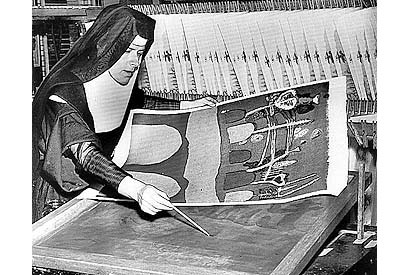
Sister Corita was the most famous nun of the 1960’s and one of the most famous graphic artists in the country, yet she is rarely mentioned in the grand history of graphic design.
Born 1918, in Fort Dodge, Iowa; Frances Kent moved with her family to Vancouver in 1920 and Los Angeles in 1922. She entered the Sisters of Immaculate Heart of Mary in 1936 as Sister Mary Corita, attended Immaculate Heart College, and received her Master’s Degree in Art History from the University of Southern California in 1951. From 1946 to 1968, Sister Corita taught art at Immaculate Heart College; often using unconventional methods: looking a work without blinking, staging happenings, etc. As the chair of the Art Department, the known and unknown visited her classes: Buckminster Fuller, Charles and Ray Eames, Ben Shahn, and Daniel and Philip Berrigan.
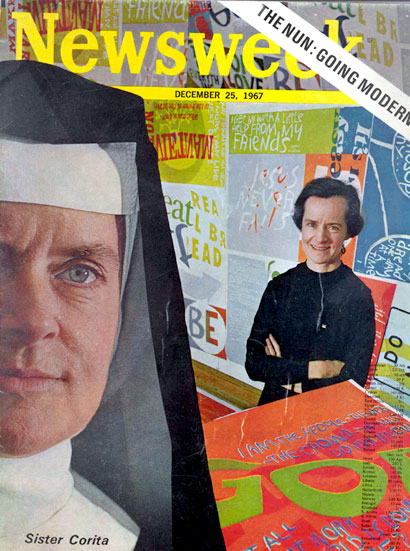
Sister Corita had been “nuts about words and their shape since [she] was very young” and during the mid-1960’s her work shifted from silkscreened, liturgical images reminiscent of Ben Shahn to Pop Art appropriations of consumer-product typography and slogans. In her view, Wonder Bread corresponded with the Eucharist, Joy detergent was a sacrament, and SafeWay was a metaphor for the Faith.
She felt there was much to learn from television advertisements. In a 1967 Christian renewal symposium she postulated if the medium is the message; then perhaps if Christ lived today, his sermons would take the form of commercials. All the poetry of a painting is diminished by those who do not see it, so to care about communication is to care about form.
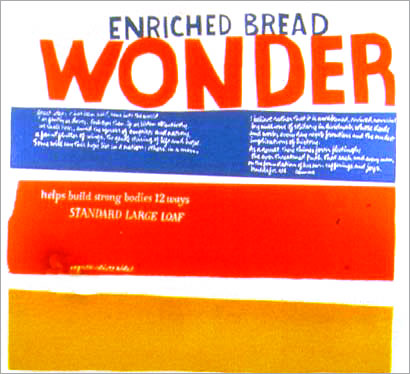
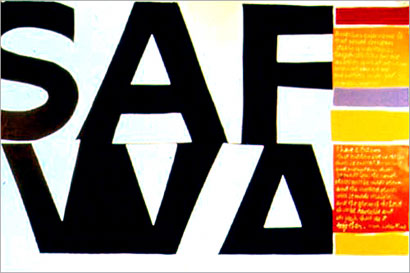
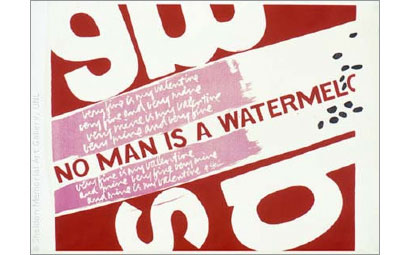

It’s striking how Sister Corita’s work addressed the marketplace. Commodity critique is such a stereotypical sighting in both the art world and design media, that when seeing work as earnest and uncynical as hers; the first impulse is to dismiss it as not serious. On the surface, there is a great camaraderie with Outsider Artists like Sister Gertrude Morgan or Howard Finster— yet she wasn’t untrained.
And she wasn’t removed from the world, either. The Sisters of Immaculate Heart of Mary was a less conservative order that, in the post-Second Vatican Council era, began to reevaluate their relationship with society — for example, publicly speaking out against the Vietnam War. Their proposals were famously opposed by archbishop James Francis Cardinal McIntyre, who issued an ultimatum. They could either be nice, quiet nuns (in habits, giving daily communion to the community, and sticking only to teaching) or petition for dispensation from their vows. In 1970, ninety percent chose to leave the Church and reorganize as a nonprofit community dedicated to peace and social justice.
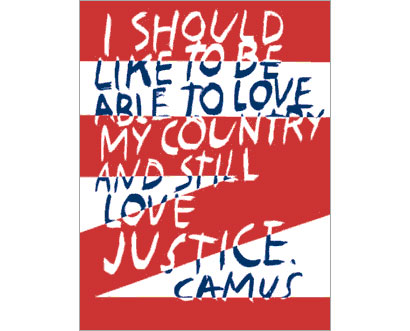
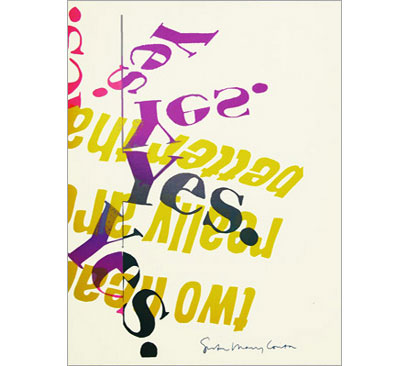
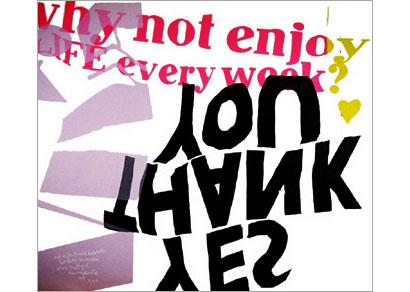
Corita stopped wearing the habit in 1967, eventually left the Order, and moved to Boston in 1970. She began accepting commissions and client work: ads for Westinghouse, book covers, and a stamp in 1985 — which over 700 million were sold, possibly the most popular US stamp. Her decorated gas tank on the Southeast Expressway is a Boston landmark.
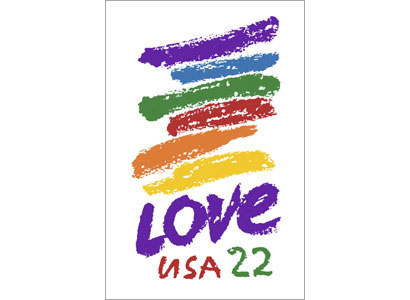

Corita died of cancer in 1986, leaving her estate to the Immaculate Heart Community. In the ensuing years, as society and the Church have become more conservative and less tolerant of dissent, her contemporaries in appropriation (Peter Max, Andy Warhol…) have retained their fame while hers has waned. The more freaky Jesus freaks like Jerry Falwell get all the press and the most famous nun of the 1960’s was played by Gidget. Still, Corita’s work remains fresh after 30 years; comparing favorably to, for example, David Carson and Ivan Chermayeff.
It’s been a couple decades since I was a practicing Catholic, but I still fondly regard the posters and appliqué hangings found in the Church at that time. Their sincerity and un-fussiness remain worthy examples for designers. Their lack of condescension and simple humanity, examples for religious leaders everywhere.









Wow. Wonderful post.
On May.19.2005 at 10:04 AM